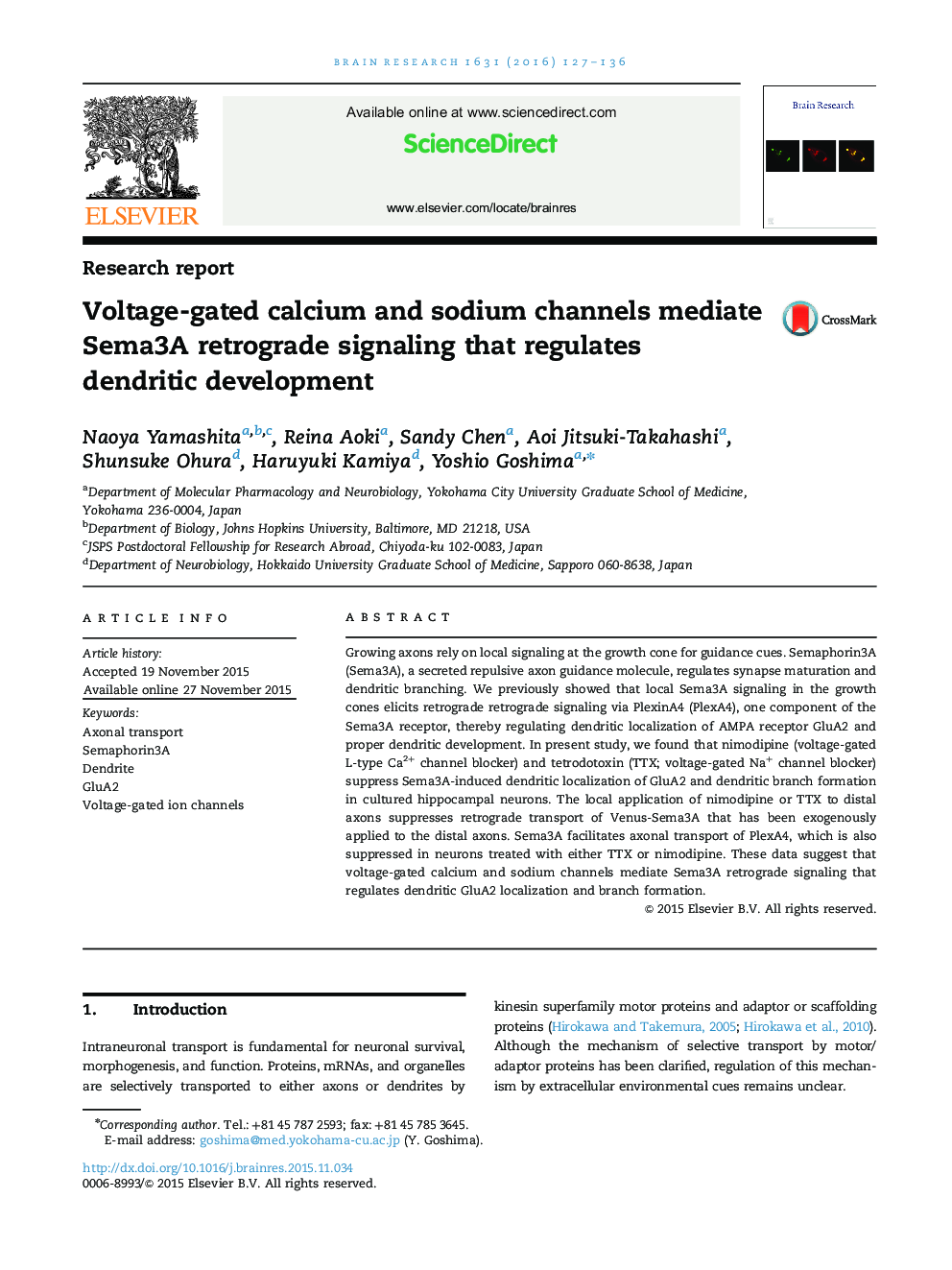| Article ID | Journal | Published Year | Pages | File Type |
|---|---|---|---|---|
| 6262615 | Brain Research | 2016 | 10 Pages |
â¢Nimodipine and tetrodotoxin suppress Sema3A-regulated GluA2 localization.â¢Nimodipine and tetrodotoxin suppress Sema3A-induced dendritic brunch formation.â¢Blockade of channel activities in distal axon suppresses the Sema3A retrograde signal.â¢Depolarization of the distal axon alone does not mimic the effect of Sema3A.
Growing axons rely on local signaling at the growth cone for guidance cues. Semaphorin3A (Sema3A), a secreted repulsive axon guidance molecule, regulates synapse maturation and dendritic branching. We previously showed that local Sema3A signaling in the growth cones elicits retrograde retrograde signaling via PlexinA4 (PlexA4), one component of the Sema3A receptor, thereby regulating dendritic localization of AMPA receptor GluA2 and proper dendritic development. In present study, we found that nimodipine (voltage-gated L-type Ca2+ channel blocker) and tetrodotoxin (TTX; voltage-gated Na+ channel blocker) suppress Sema3A-induced dendritic localization of GluA2 and dendritic branch formation in cultured hippocampal neurons. The local application of nimodipine or TTX to distal axons suppresses retrograde transport of Venus-Sema3A that has been exogenously applied to the distal axons. Sema3A facilitates axonal transport of PlexA4, which is also suppressed in neurons treated with either TTX or nimodipine. These data suggest that voltage-gated calcium and sodium channels mediate Sema3A retrograde signaling that regulates dendritic GluA2 localization and branch formation.
